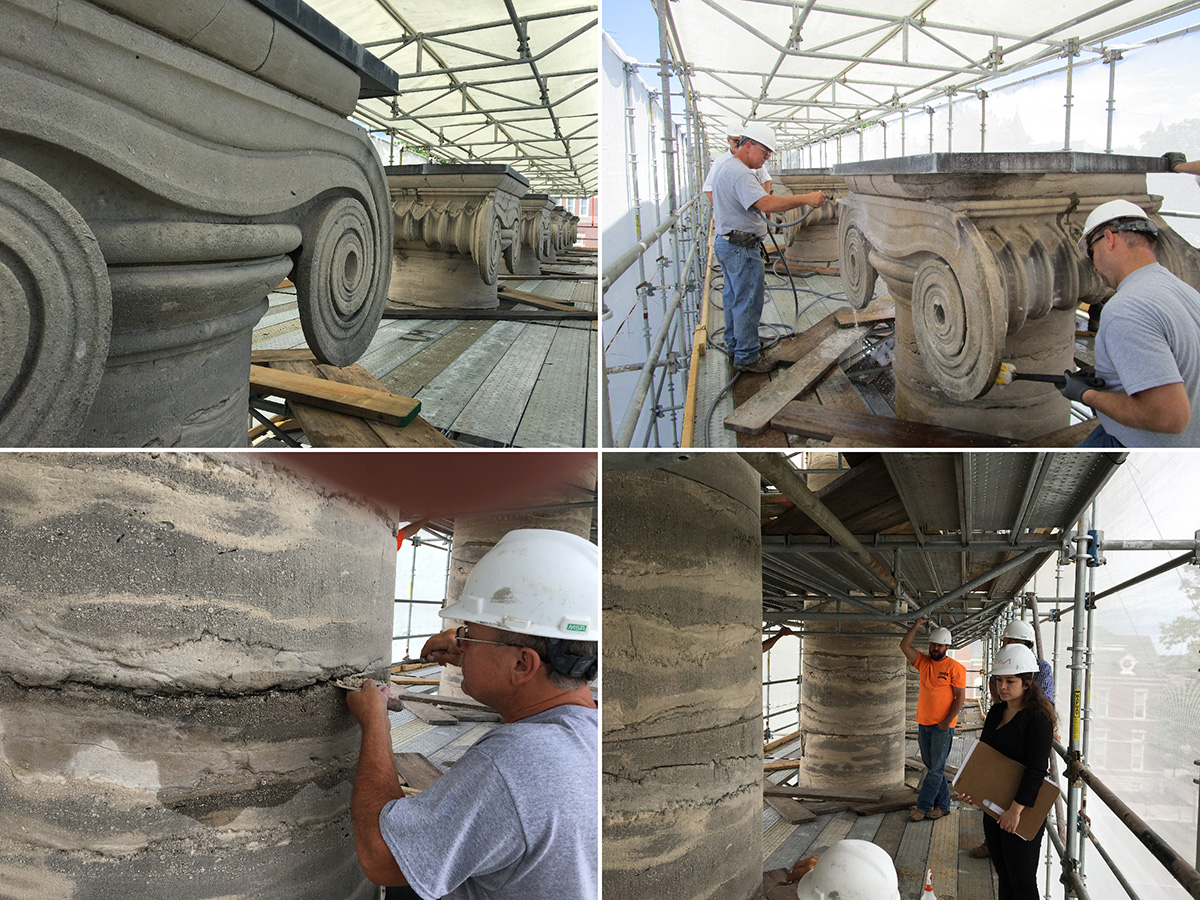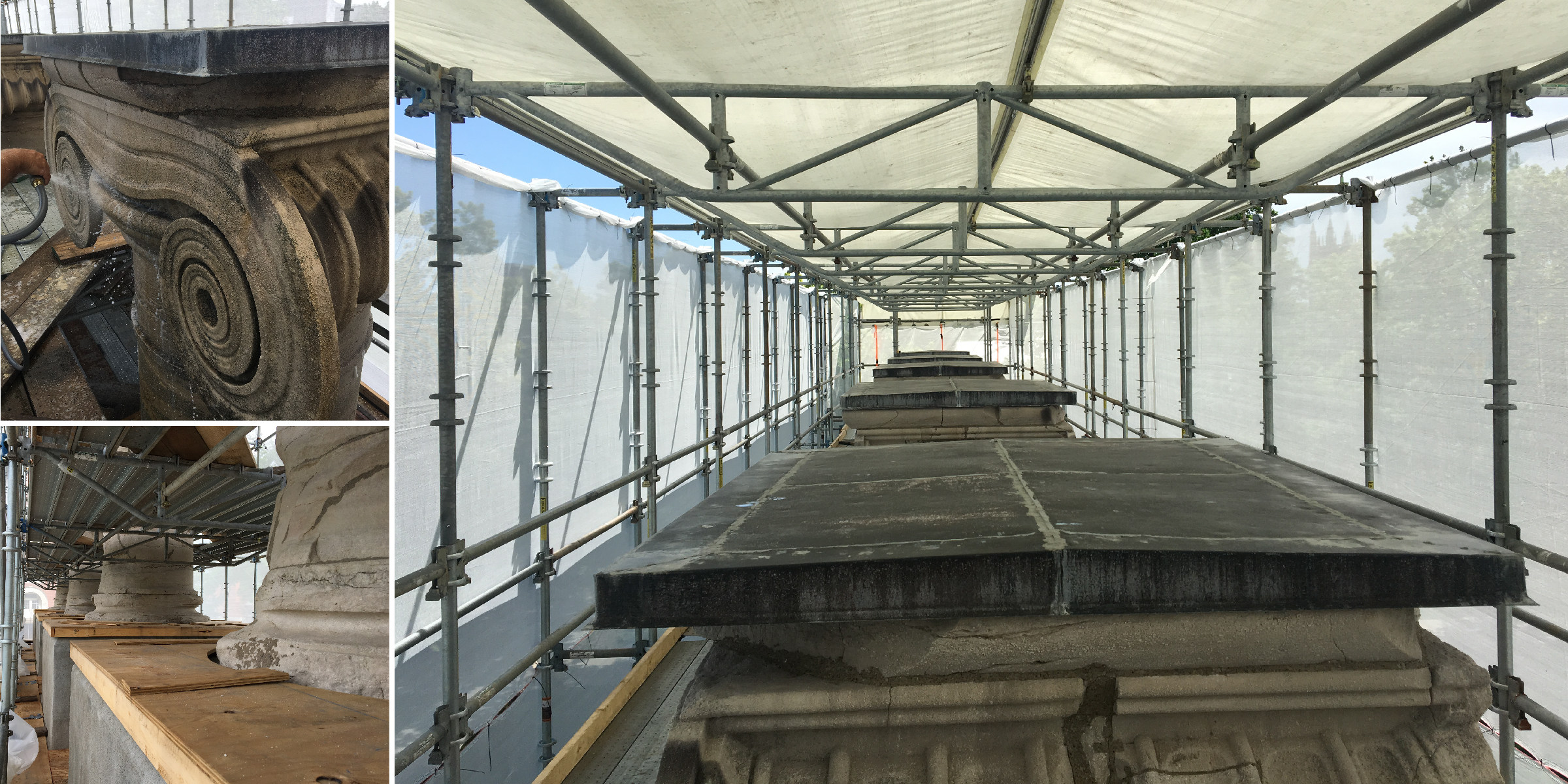At the University of Missouri-Columbia, six limestone columns are all that remain of Academic Hall, the first building erected on the campus in 1843. On January 9, 1892 a fire consumed and destroyed the entire building. The next year, the Board of Curators voted to tear down the columns, both for their unsightly appearance and also their perceived safety hazard. After inspections showed the foundations were safe however, Columbia citizen, Jerry Dorsey passionately argued for the Columns’ preservation. Board President, Gideon Rothwell was so moved by the events that he had a complete change of heart, uttering the now famous line, “Let these Columns stand. Let them stand for a thousand years.”
Since then, the campus has taken shape around the iconic columns, which are situated at the heart of the historic Francis Quadrangle. This summer a team, led by IAA principal, Majid Amirahmadi and designer, McKenzie Liebl, are helping to preserve and conserve them. For the project, the two main focuses are life safety and conservation. Regarding life safety, there are a number of delaminated/fractured stones that need to be pinned back and secured to the Column shafts. The subscribed masonry conservation is intended to preserve and protect the Columns from the natural elements, as well as more inclement weather. For instance, currently there are deep weather veins, cracks, ledges, and fractures in the Columns that allow rain and snow to enter and cause damage to the stone, especially due to freezing and thaw cycles during cold months. The following grouts: non-hydraulic dispersed hydrated lime (DHL), Jahn M40, natural hydraulic lime, Jahn M70, and custom formula, will be injected into the stone and provide patching in compromised areas.

In addition to conservation work, preventative measures, including the installation of GIS survey prisms, are being executed as well, to closely monitor the condition of the Columns. The GIS survey prisms are a monitoring tool, which will provide insight into any future shifting and rotation. Currently, the Columns are structurally sound and movement is not a concern. This will be a useful tool in the future, allowing our team and the University to track and analyze data, proactively addressing any issues or changes down the line.
A common question asked for a project like this is, “how long will the repairs last before additional work is needed?” The short answer is – there is no answer. It’s difficult to predict the longevity of any masonry conservation. However, we can say with certainty that the work currently being performed will preserve the landmark for many years to come before similar action is required again. As a point of reference, the last major masonry conservation of the Columns was completed in 1937- nearly 80 years ago. That’s not to say it will be another 80 years before it happens again. Rather, the important takeaway is to understand that conservation work, when performed properly and with great care, ensures many years of strength, well-being, and longevity for historic landmarks like the Francis Quad Columns.


